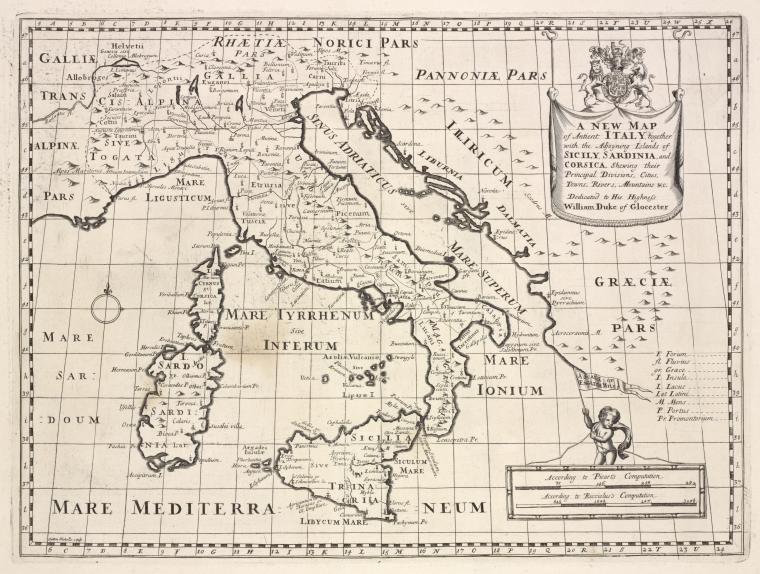Peter Kalkavage
Tyrrhenian Sea
>The Tyrrhenian Sea according to Massimo Pittau was named after the Sardinian Nuragics, since in ancient Greek ‘Tyrrenoi’ means ‘builders of towers’. As noted elsewhere, Sardinia was an important part of the Atlantean domain.<
Plato clearly states that Atlantis controlled Europe as far as Tyrrhenia (Critias 114c), which implies that they dominated the southern half of the Italian peninsula. The Sea is surrounded by the islands of Corsica, Sardinia, Sicily and the Lipari Islands as well as continental Europe in the form of the Italian mainland. Not only does it contain islands with an adjacent continent (see Timaeus 24e). It is also accessed through the straits of Messina and Sicily, both of which have been identified as locations for the Pillars of Heracles before Eratosthenes applied that appellation to the region of Gibraltar.
Timaeus 24e-25a as translated by Bury reads “there lay an island which was larger than Libya and Asia together; and it was possible for the travellers of that time to cross from it to the other islands, and from the islands to the whole of the continent over against them which encompasses that veritable ocean (pontos=sea). For all that we have here, lying within the mouth of which we speak, is evidently a haven having a narrow entrance; but that yonder is a real ocean (pelagos=sea), and the land surrounding it may most rightly be called, in the fullest and truest sense, a continent.” Similarly, Lee and Jowett have  misleadingly translated both pontos and pelagos as ‘ocean’, while the earliest English translation by Thomas Taylor correctly renders them as ‘sea’. Modern translators such as Joseph Warren Wells and a Greek commentator George Sarantitis are both quite happy to agree with Taylor’s translation. However, Peter Kalkavage translates pontos as ‘sea’ but pelagos as ‘ocean’!
misleadingly translated both pontos and pelagos as ‘ocean’, while the earliest English translation by Thomas Taylor correctly renders them as ‘sea’. Modern translators such as Joseph Warren Wells and a Greek commentator George Sarantitis are both quite happy to agree with Taylor’s translation. However, Peter Kalkavage translates pontos as ‘sea’ but pelagos as ‘ocean’!
For me, there is a very strong case to be made for identifying the Tyrrhenian Sea as the ‘sea’ referred to by Plato in the passage quoted above. However, it was probably F.Butavand, in 1925, who first proposed the Tyrrhenian as the sea described by Plato in his La Veritable Histoire de L’Atlantide[205] .
Pushing the boat out a little further, I note that Rome is situated in Central Italy and by tradition was founded by the twins Romulus and Remus!
A 1700 map of the Tyrrhenian Sea is available online.
‘Tyrrhenia’ is sometimes used as a geological term to describe a sunken landmass in the Western Mediterranean Basin(b)(c).
(a) (link broken) *
Kalkavage, Peter
Peter Kalkavage is a tutor at St. John’s College, Annapolis, Maryland. His passions are music(a)  and philosophy(b), which he teaches. He has translated Plato’s Timaeus[851] and was also a co-translator of two of Plato’s other dialogues Phaedo and Statesman (Politikos).
and philosophy(b), which he teaches. He has translated Plato’s Timaeus[851] and was also a co-translator of two of Plato’s other dialogues Phaedo and Statesman (Politikos).
In 2000, he delivered a lecture on the content of Timaeus, now available online(c).
(a) Why Music Is an Essential Liberal Art – The Imaginative Conservative (archive.org)
(b) https://www.goodreads.com/author/show/4286.Peter_Kalkavage
(c) Plato’s “Timaeus” and the Will to Order ~ The Imaginative Conservative *
English Translations (L)
English Translations of Plato’s Timaeus and Critias have been freely available since 1793 when Thomas Taylor produced his translation.
In 1804 Taylor published the first English translation of the entire Platonic corpus. In 1871, Benjamin Jowett produced the most commonly quoted version of the Atlantis Dialogues, principally because his work is now out of copyright. Henry Davis produced a translation of Critias in the 19th century and John Alexander Stewart also offered a translation of Critias early in the 20th century.
1925 saw W.R.M. Lamb publish a translation of some of Plato’s works and today his rendering of both Timaeus and Critias is used by the Perseus Digital Library(a). In 1929, Lewis Spence included a composite version of the Atlantis texts in The History of Atlantis, using the English translations of Jowett and Archer-Hind for Timaeus and the French translations of Jolibois and Negris for Critias. Rev. R. G. Bury gave us what was arguably the best translation of the Dialogues (Loeb Classical Library, 1929) and is included at the beginning of this book. Francis M. Cornford (1874-1943) published his Timaeus (Bobbs-Merrill, 1937)
Sir Desmond Lee produced a new English translation in 1972 (Penguin)
Professor Diskin Clay delivered an acclaimed translation of Critias (Hackett Publishing, 1997). Professor Donald J. Zeyl offered a new translation of Timaeus (Hackett Publishing, 2000). Dr. Peter Kalkavage published a highly regarded translation of Timaeus (Focus Philosophical Library, 2001).
In 2008, Robin Waterfield offered a new translation of Critias and Timaeus[0922] as well as a revision of Desmond Lee’s translation of them by Thomas Kjeller Johansen.

